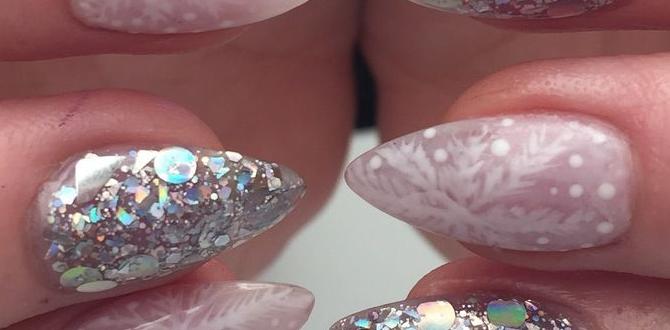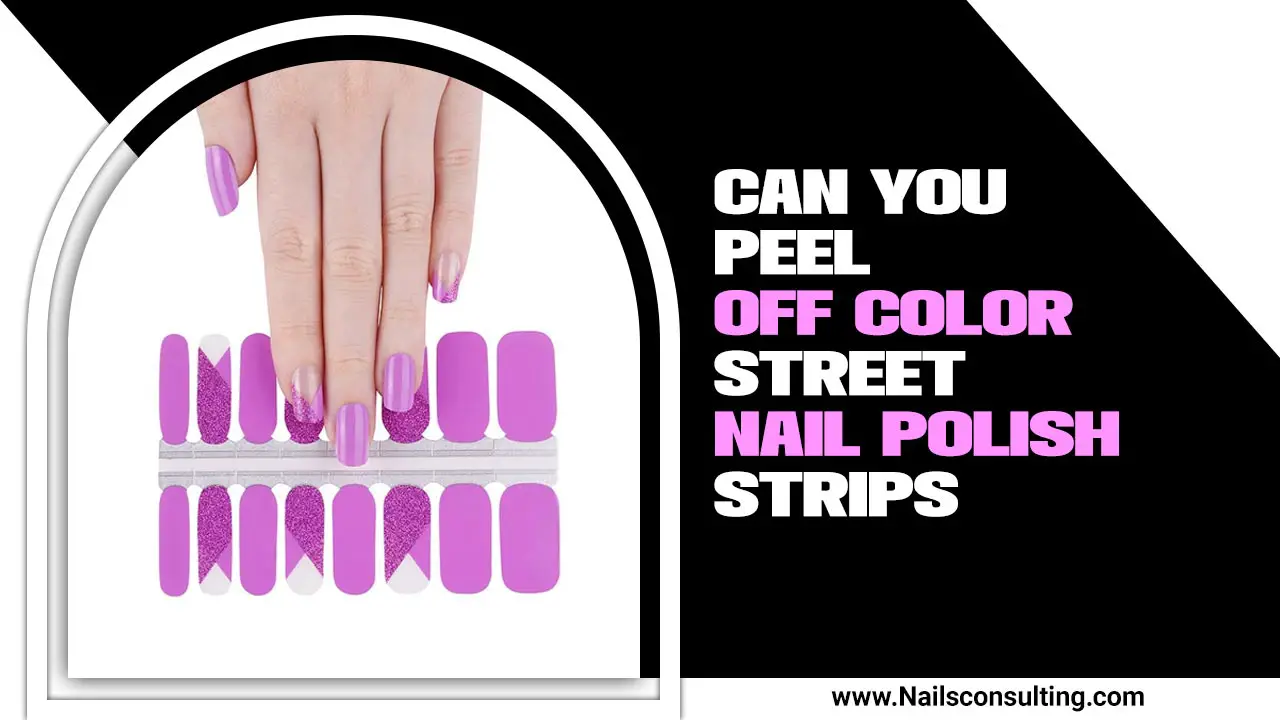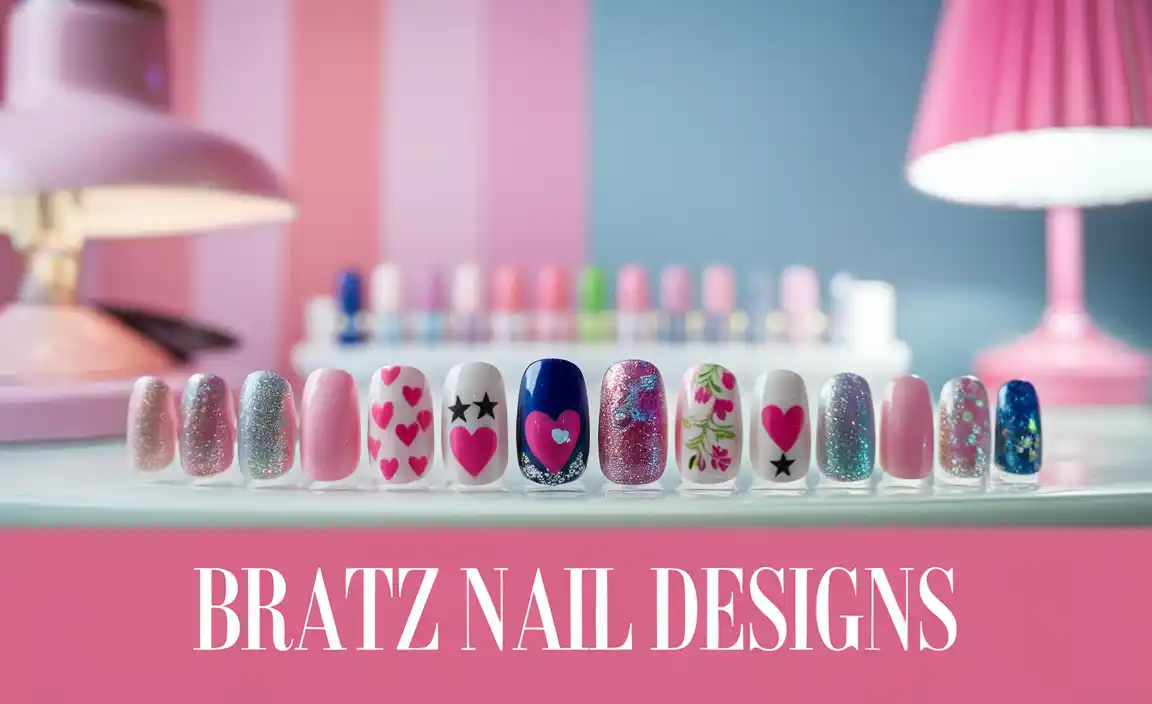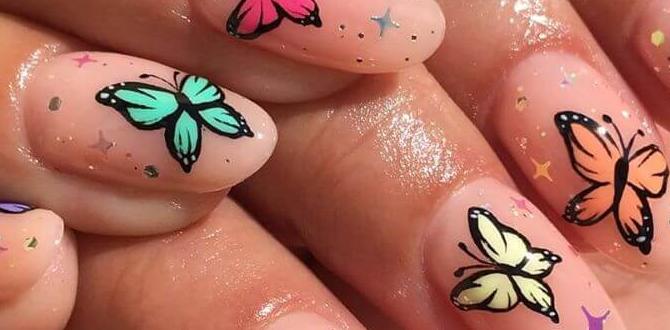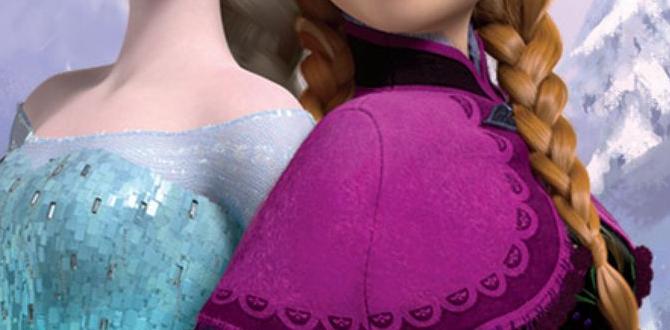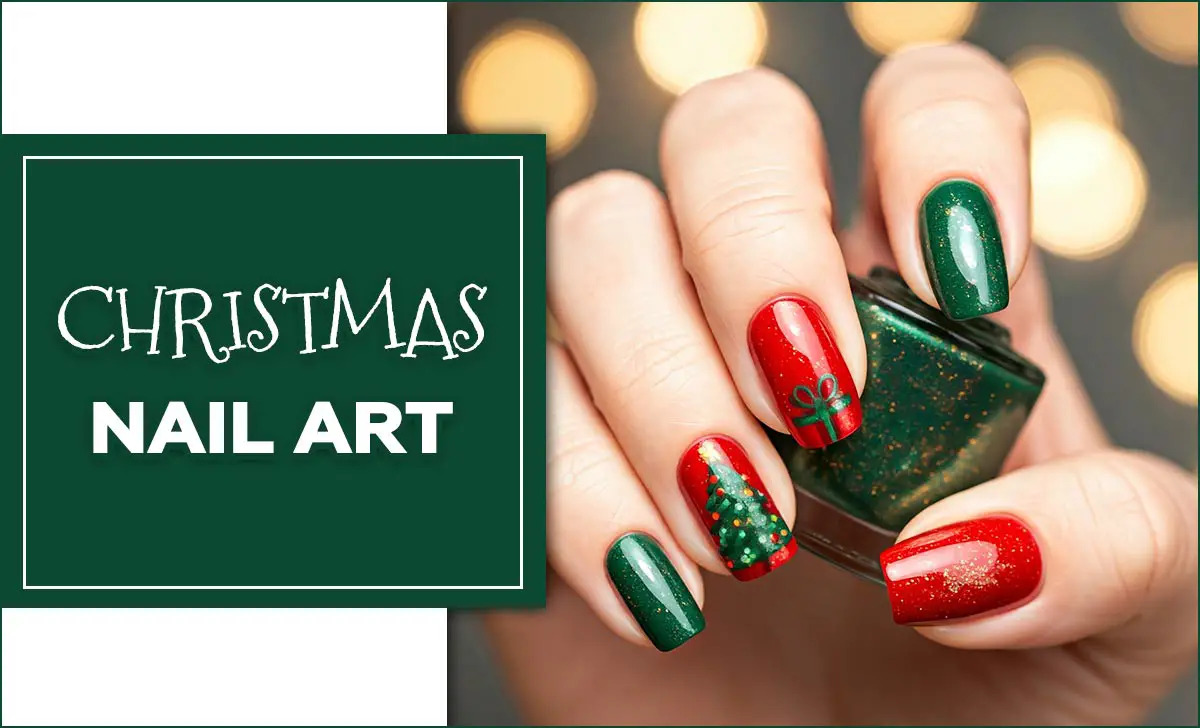How to Do Nail Art for Beginners: Genius Tips & Tricks
Mastering nail art as a beginner is totally achievable with the right tips and a dash of creativity! You don’t need a steady hand like a surgeon or a professional kit to create stunning designs. This guide will break down the essentials, from picking the right tools to executing simple yet chic patterns, empowering you to express your unique style right from home. Get ready to elevate your mani game!
Feeling a little intimidated by all those gorgeous, intricate nail art designs you see online? You’re not alone! Many of us admire elaborate nail art, dreaming of recreating those masterpieces. But then, the fear of messy polish, wobbly lines, or simply not knowing where to start can feel like a big roadblock. The good news is that creating beautiful nail art doesn’t require years of practice or a professional salon. We’re going to walk through simple, genius tips that will make you feel confident and ready to create your own stunning nail art, even if you’ve never picked up a dotting tool before. Let’s transform your fingertips into tiny canvases of self-expression!
Nail Art for Beginners: Your Essential Toolkit
Before we dive into creating art, let’s get you equipped with the right tools. You don’t need a massive collection, just a few key items to get started. Think of these as your starter pack for nail art adventures!
Must-Have Nail Art Supplies
- Base Coat: This is your foundation! It protects your nails from staining and helps your polish adhere better.
- Top Coat: The finishing touch that adds shine and seals your design, making it last longer.
- Nail Polish in Various Colors: Start with a few of your favorite colors, plus black and white – they are super versatile for creating details.
- Thin Nail Art Brushes: These are crucial for drawing lines, dots, and intricate details. Look for fine-tipped ones.
- Dotting Tools: These have small metal balls on the end in different sizes. Perfect for creating perfect dots and simple floral patterns.
- Toothpicks or Balled-Up Aluminum Foil: Great DIY alternatives for dotting tools if you’re just starting out and want to keep costs low.
- Nail Polish Remover and Cotton Swabs: For cleaning up mistakes and refining edges.
- Clear Tape or Washi Tape: Excellent for creating crisp lines and geometric patterns.
- Sponge (Makeup Sponge or Kitchen Sponge): Ideal for gradient effects and marbling.
Which Nail Polishes are Best for Art?
Not all nail polishes are created equal when it comes to nail art. For beginners, you’ll want polishes that have a good consistency – not too thick that they drag, and not too thin that they’re streaky. Cream finishes are generally the easiest to work with. Gel polishes offer incredible durability and a salon-like finish, but they require a UV/LED lamp to cure, which adds an extra step and investment. For starting out, traditional nail polish is perfectly fine and more forgiving!
Step-by-Step: Easy Nail Art Designs for Absolute Beginners
Let’s get our hands (and nails!) dirty with some super simple designs. These are perfect for building your confidence and skills.
1. The Classic Polka Dot Mani
Polka dots are a timeless favorite and incredibly easy to achieve. They look chic on any nail shape and color.
- Prep Your Nails: Start with clean, filed nails. Apply your base coat and let it dry completely.
- Apply Base Color: Paint your nails with your chosen base color. Let it dry thoroughly – this is key to avoid smudging later!
- Dotting Time: Dip your dotting tool (or toothpick) into a contrasting nail polish. Gently press the tip onto your nail to create a dot. Repeat to create your desired pattern. You can make them evenly spaced, random, or concentrated in one area.
- Clean Up: Use a cotton swab dipped in nail polish remover to clean up any stray dots around your cuticles.
- Seal the Deal: Apply a top coat to make your dots pop and protect your design.
2. Simple Striped Nails
Lines can look so professional, and tape makes them a breeze!
- Base and Dry: After applying your base coat and a solid color, ensure it’s bone dry.
- Apply Tape: Carefully place strips of clear tape or washi tape onto your nail. You can create vertical, horizontal, or diagonal stripes. Press the edges down firmly to prevent polish bleeding.
- Paint Over: Paint over the tape with your contrasting color.
- Remove Tape Carefully: While the top color is still slightly wet (but not runny!), carefully peel off the tape. If you wait until it’s fully dry, you might pull off the polish underneath.
- Touch-Ups (if needed): If there’s any minor bleeding, a fine brush dipped in remover can clean it up.
- Top Coat: Once everything is dry, apply your top coat.
3. Gradient (Ombre) Nails with a Sponge
The soft blend of colors in a gradient is stunning and surprisingly simple with a sponge.
- Base Color: Apply a light, neutral base color or white. Let it dry.
- Prepare Your Sponge: Cut a makeup sponge into a few small pieces. You can also use a regular kitchen sponge.
- Apply Polishes to Sponge: On a protected surface (like foil or a plastic lid), paint parallel lines of 2-3 colors you want to blend.
- Sponge onto Nail: Quickly dab the sponge onto your nails, pressing gently to transfer the color blend. You might need a few passes to build up the color.
- Clean Up Edges: Use a brush with nail polish remover to clean up the skin around your nails.
- Repeat for Intensity: For a more vibrant gradient, let the first layer dry slightly and repeat the sponging process.
- Top Coat: Finish with a shimmering top coat to enhance the blended effect.
4. Easy Marble Effect
Marble looks complex, but a simple water marbling technique with a few drops of polish can create a chic, unique pattern.
- Prepare Your Workspace: Cover your table with newspaper. Fill a small cup with room-temperature water. Have your polishes, a toothpick, and tape ready.
- Protect Your Skin: Apply a layer of liquid latex or a thick layer of Vaseline around your cuticles to protect your skin from polish.
- Add Polish to Water: Open your nail polish bottles. Gently drop a few drops of 2-3 different colors onto the surface of the water.
- Swirl: Immediately use a toothpick to gently swirl the colors together, creating a marbled pattern. Don’t over-swirl!
- Dip Your Nail: Carefully dip your nail into the pattern on the water’s surface, at an angle.
- Remove Excess: Gently lift your nail out of the water, then use the toothpick to remove any excess polish floating on the surface around your nail.
- Clean Up and Seal: Remove the protective barrier from your skin. Once dry, apply a top coat.
- Resources for Water Marbling: For a deeper dive into water marbling techniques and troubleshooting, consult resources like the Nail Care File tutorial which offers great visual guides.
Beyond the Basics: Genius Tips for Beginner Nail Art Success
These are the little secrets that can make a big difference in your nail art journey.
Tip 1: Patience is Your Best Friend
Rushing is the number one enemy of good nail art. Each layer of polish needs time to dry, especially when you’re layering designs. If you try to add dots or lines on a wet base, you’ll end up with a smudged mess. A good drying time ensures clean lines and crisp details.
Tip 2: Thin Coats are Better
Applying polish in thin, even coats rather than thick, gloopy ones is crucial. Thin coats dry faster and prevent bubbles and streaks. It might take two or three thin coats to get opaque color, but it’s always worth it for a smoother finish.
Tip 3: Practice on Nail Wheels or Paper First
Before you commit to your actual nails, practice your new design on nail art practice wheels or even just on a piece of paper. This lets you get a feel for the tools and the polish application without the pressure of perfecting it on your hands immediately. Even beauty magazines recommend practice before diving into a complex design!
Tip 4: Clean Up Mistakes as You Go
Don’t let little errors ruin your whole manicure. Keep a small brush (an old, clean makeup brush works well) and your nail polish remover handy. Dip the brush in remover and carefully clean up any smudges or uneven lines around your cuticles or sidewalls. This makes a HUGE difference in the final look.
Tip 5: Embrace Imperfection
Especially when you’re starting, perfect is the enemy of done. A slightly imperfect dot or a slightly wobbly line adds character. These are handmade creations! The goal is to have fun and express yourself, not to create something that looks like it came off a factory line. Many popular styles embrace a more organic, imperfect look.
Tip 6: Use a Quick-Dry Top Coat
A game-changer for busy bees! Quick-dry top coats not only speed up the drying process but also add a beautiful, protective sheen to your nail art. This minimizes the risk of smudging your hard work shortly after you finish.
Tip 7: Master the “Clean Up Brush” Technique
This deserves its own mention! A clean-up brush (a small, flat-tipped synthetic brush) is your best friend for refining edges. Dip it slightly in nail polish remover and then wipe off excess on a paper towel before using it to clean around your cuticles and the sides of your nails. This creates super crisp lines and a professional finish.
Tip 8: Experiment with Textures
Once you’re comfortable with basic designs, play with different polish finishes! Matte top coats can transform a glossy design, glitter polishes add sparkle, and textured polishes can create unique effects with minimal effort. Don’t be afraid to mix and match finishes for added dimension.
Troubleshooting Common Beginner Nail Art Problems
Even with the best intentions, sometimes things don’t go as planned. Here’s how to fix the most common beginner hiccups.
Problem: Smudged Nails
Solution: This usually happens because the polish wasn’t dry enough. Next time, wait longer between coats or use a quick-dry top coat. If you smudge a perfectly painted nail, the easiest fix is to carefully apply another thin coat of the same color over the smudge to smooth it out, then let it dry completely before proceeding. If it’s a small smudge on a design, a dotting tool or a fine brush can sometimes help camouflage it.
Problem: Streaky or Sheer Polish
Solution: Apply your polish in thin, even coats. If you’re using a sheer polish, you might need 3 thin coats for full opacity. Ensure you’re using a good quality polish that hasn’t dried out. Shaking the bottle gently before use (rather than vigorous shaking) also helps mix the pigment evenly. A sheer polish can be great for layering or subtle gradients, too!
Problem: Polish Bleeding Under Tape
Solution: Ensure your base color is completely dry. When applying the tape, press down the edges very firmly. For an extra foolproof method, apply a thin layer of clear polish over your base color, let it get slightly tacky (not wet), then apply the tape. This creates a barrier that the next polish is less likely to seep under. For geometric designs, removing the tape while the top color is slightly wet works best.
Problem: Clumpy Polish
Solution: Polish can get clumpy if it’s old or has been exposed to air for too long. Try adding a few drops of good quality nail polish thinner (not remover!) to revive it. If it’s too far gone, it’s time to retire the bottle and get a fresh one. This is also a good reminder to always close your polish bottles tightly!
Problem: Uneven Dots or Lines
Solution: For dots, try dipping your tool into the polish consistently. If it’s too much polish, wipe some off on a paper strip. If it’s not enough, it will create a weak dot. For lines, a steady wrist and a fine-tipped brush are key. Practice on paper first. Don’t be afraid to use your clean-up brush with remover to refine any wobbly lines or misshapen dots. You’ve got this!
Essential Nail Care for Your Art Canvas
Nail art looks best on healthy, well-maintained nails. Here are a few tips to keep your natural nails in tip-top shape, making them the perfect canvas.
Keep Them Hydrated
Dry cuticles and nails can lead to peeling and make polish application difficult. Use cuticle oil regularly, especially after removing polish or doing dishes. A good cuticle oil nourishes the nail bed and surrounding skin. The American Academy of Dermatology Association recommends moisturizing hands and cuticles daily. The American Academy of Dermatology (AAD) has further tips on nail health.
File Correctly
Always file your nails in one direction, not back and forth like a saw. Sawing can weaken the nail plate and cause splitting. Use a fine-grit emery board or a glass nail file for a smooth finish. Try to maintain a consistent shape whether you prefer square, oval, or almond.
Give Your Nails a Break
If you wear polish constantly, give your nails a week or so without polish every month or two. This allows them to “breathe” and can help prevent them from becoming brittle or discolored.
Use Formulas That Care
Look for nail polishes that are “3-free,” “5-free,” “7-free,” or even “10-free.” This means they are formulated without certain harsh chemicals like formaldehyde, toluene, and DBP. These are better for your nail health long-term.
Comparing Easy Nail Art Techniques
Let’s look at a quick breakdown of some of the beginner-friendly techniques we’ve discussed.
| Technique | Ease for Beginners | Key Tools | Best For |
|---|---|---|---|
| Polka Dots | Very Easy | Dotting tool, toothpick, nail polish | Simple patterns, accent nails, playful designs |
| Stripes (with tape) | Easy | Clear tape/washi tape, brushes, nail polish | Geometric looks, clean lines, color blocking |
| Gradient/Ombre | Medium | Sponge, nail polish | Soft color blends, modern looks |
| Marble Effect (simple water method) | Medium-Hard | Water, toothpicks, nail polish, protection for skin | Unique, organic patterns, luxurious feel |
Frequently Asked Questions About Beginner Nail Art
Q1: How long does it take to get good at nail art?
A: With practice, you can get comfortable with basic designs within a few weeks! Mastery takes longer, but the fun is in the journey and the immediate results you can achieve starting today.
Q2: Can I really do nail art with just regular nail polish?
A: Absolutely! While gel polish offers durability, standard nail polish is fantastic for learning and experimenting. Many beautiful designs are created with it.
Q3: What’s the best way to clean up nail art mistakes?
A: A small, fine-tipped brush (like a liner brush or even a clean-up brush) dipped in nail polish remover is your best friend for precise clean-ups around cuticles and edges.
Q4: Do I need expensive tools to start nail art?
A: No! You can start with toothpicks for dots, household sponges for gradients, and basic art brushes. As you get more into it, you can invest in specialized tools.
Q5: How do I prevent my nail art from chipping quickly?
A: A good base coat, thin coats of polish, and a quality, sealed-off top coat are essential. Ensure your top coat fully covers the tips

